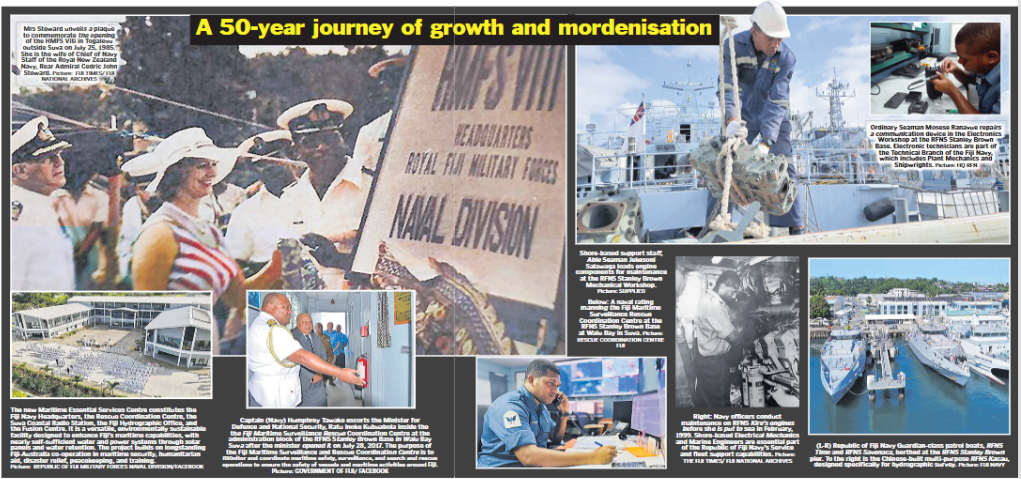BY FIJI NAVY
Since its inception on July 25, 1975, the evolution of the Fiji Navy reflects the visionary leadership, dedication and resolve of this nation’s leaders and the leaders of Fiji’s defence forces. It embodies a proud legacy built on strength, courage, and an unwavering commitment to the professional development and modernisation of the maritime force, aimed at strengthening its role on safeguarding Fiji’s maritime interests. The efforts of the Fiji Royal Navy Volunteer Reserve have also made significant contributions to this development.
Victory Parade
The Victory Parade held at Albert Park on August 23 1945 upon the end of the Solomon Campaign was followed by the demobilisation of troops. Some of them were offered agricultural tools and returned to their villages. Some were given vocational training in various trades while some received tuition fees to attend New Zealand Universities or schools in Fiji.
Later in March 1946, a total of 10 officers and 72 other ranks were mobilised when Fiji was invited to participate in the Victory Parade in London on June 8 1946. Some members of the Fiji Royal Navy Volunteer Force were part of the Royal Fiji Military Forces detachment at the Victory Parade.
On their return to Fiji, they travelled from London to New Zealand where the HMS Viti conveyed the troops to Fiji in two trips. The HMS Viti was put up for sale in late 1946 and was later sold to the Tasman Steam Ship Company in Auckland in 1948.
Stone Frigate
Historically for the Royal Navy and allied forces, the term Stone Frigate is a name given to a shore establishment of a naval force. The first ever stone frigate establishment was given to a 175 metre-high uninhabited basalt island located 3 kilometres from Ponte Diamant on the Caribbean Island of Martinique.
The island was occupied by Commodore Sir Samuel Hood who commissioned it as the ‘Sloop’ HMS Diamond Rock in 1803 as a strategic position to blockade the bays at Fort Royal and Saint Pierre in Martinique which was armed with two 18-pounder cannons and manned with two Lieutenants and 120 men.
Fiji has commissioned two shore establishment as Stone Frigates and one remains today.
The Fiji Royal Navy Volunteer Reserve (FRNVR) was established under the wartime emergency regulation during WWII. Upon the end of WWII, the wartime regulation was repealed and there was no legislation for a navy. In January 1955 the FRNVR became a legal entity following the drafting of the legislation in 1950 followed by the legal process which took another four years. Lieutenant Commander Slinger Woods from the Royal New Zealand Volunteer Reserve was appointed the inaugural Commanding Officer and Lieutenant Stanley Brown was promoted as Lieutenant Commander and appointed executive officer.
The recruitment drive attracted young men to join the revived maritime force. Ratu Inoke Bainimarama and former members of FRNVR with wealth of experience were also reenlisted. Although the FRNVR was a sub-unit of the Royal Navy, they were under the administrative control of the Royal New Zealand Navy. The first FRNVR staff officer was Lieutenant Commander Williams from RNZN who also acted as naval staff officer to the ‘5’ Squadron, RNZAF, an anti-submarine unit stationed at the RNZAF base at Laucala Bay in Suva.
Then the Engineers Unit of the Fiji Military Forces began building a drill hall, lecture rooms and store complex located opposite the Draunibota Bay at the Queens Rd in Lami. A Seaward Defence Motor Launch (SDML) was commissioned in Auckland in October 1955 as HMS Viti. A few weeks later the Shore Base at Draunibota was officially commissioned as HMS Viti, the first ‘Stone Frigate’ in Fiji.
The commissioning ceremony was attended by the Governor of Fiji, Sir Ronald Garvey, and the Chief of Naval Staff from New Zealand.
Military strength and activities were reduced following the end of WWII in 1945. Then in 1948 a state of emergency was declared in the British colony of Malaya (now Malaysia).
The Malayan National Liberation Army (MNLA) – the armed wing of the Malayan Communist Party (MCP) began attacking rubber plantations, mines and police stations, derailing trains and burning workers houses. The insurgency was described as an emergency to avoid insurers refusal to compensate plantation and mine owners had it been declared as war.
The Commonwealth nations’ reaction for counter – insurgency resulted in the deployment of 1st Battalion Fiji Infantry Regiment (1FIR) troops as volunteers for Malayan Campaign in 1952. After successfully completing their mission, the 1FIR troops returned to Fiji in 1956 on-board HMS Devonshire.
As they entered the Suva harbour, the troops were welcomed by members of FRNVR on board the new HMS Viti at the Suva harbour while the welcoming crowd waited at the Kings Wharf.
Shore establishments
Since the establishment of the Fiji Navy of the Royal Fiji Military Forces in 1975, the maritime force unit has established four shore bases. The first shore base which was set aside for the Fiji Navy located opposite the northern end of Kings Wharf.
RFMF personnel were tasked to clear debris from area which was set aside in January 1976 as home to the two ex-minesweepers expected to arrive into the country the following month. The Australian Government through Defence Cooperation Program in 1986 announced to offer of the Pacific Patrol Boats and the construction of a Fiji Navy Headquarters.
Unfortunately, the assistance was shelved following the 1987 political turmoil.
A significant event on the celebration of the first decade of Fiji’s naval force in July 1985 was the opening of the Fiji Navy Training Base at Togalevu. The Governor General of Fiji, the late Honourable Ratu Penia Ganilau, officially commissioned the former Fisherman’s Lodge as HMFS Viti and Mrs. Steward the wife of Chief of Navy Staff of the RNZN, Rear Admiral Cedric John Steward unveiled the commemorative plaque at the naming ceremony.
During his speech at the commissioning ceremony, the Governor General stated that HMFS Viti was the second Stone Frigate to be commissioned in Fiji.
The Australian Prime Minster, Paul Keating revealed during their discussion with Fiji’s Prime Minister Sitiveni Rabuka in early September 1992 that Fiji was re-included in the Defence Cooperation Program.
The reactivation of DCP assistance resulted in the delivery of the three Pacific Patrol Boats to Fiji in 1994 and 1995. Two other developments eventuated at the naval base at Walu Bay in 1995. First, the Chief of Naval Staff of the Royal Australian Navy, Vice Admiral R.G. Taylor commissioned the naval base at Walu Bay as RFNS Stanley Brown Base on July 27 1995 and Mr Moran, the representative of DCP, officially opened the $605,000.00 admin block as Navy Headquarters at Stanley Brown Base on December 2 1995.
The Fiji Government paid $151,250.00 and the Australian Government paid the rest of the cost of the construction of the admin block. In April 2022, the Governor General of Australia, David John Hurley with the company of Fiji’s Minister for Rural, Maritime Development and Disaster Management, and Minister for Defence, National Security and Policing, Inia Seruiratu officiated at the opening of the newly refurbished Stanley Brown Pier and a new gymnasium at the base.
The Australian Government Defence Minister, Linda Reynolds revealed in 2020 that it was imperative to identify new ways to progress maritime security co-operation in the region.
It was agreed during the discussion with her counterpart Inia Seruiratu that the Australian Government would fund the construction of the Maritime Essential Services Centre in Fiji. The Australian Prime Minister, Anthony Albanese and then Prime Minister of Fiji, Josaia Voreqe Bainimarama jointly announced the construction of the MESC building at Lami in July 2022. It is envisaged that the opening of the newly built MESC building will coincide with the 50th Anniversary Celebration of the Republic of Fiji Navy.
Another promising development for Fiji’s maritime force is the availability of amenities for women aboard RFNS Savenaca and RFNS Timo. The amenities enable women in the navy to be part of surveillance patrol within Fiji’s economic exclusive zone.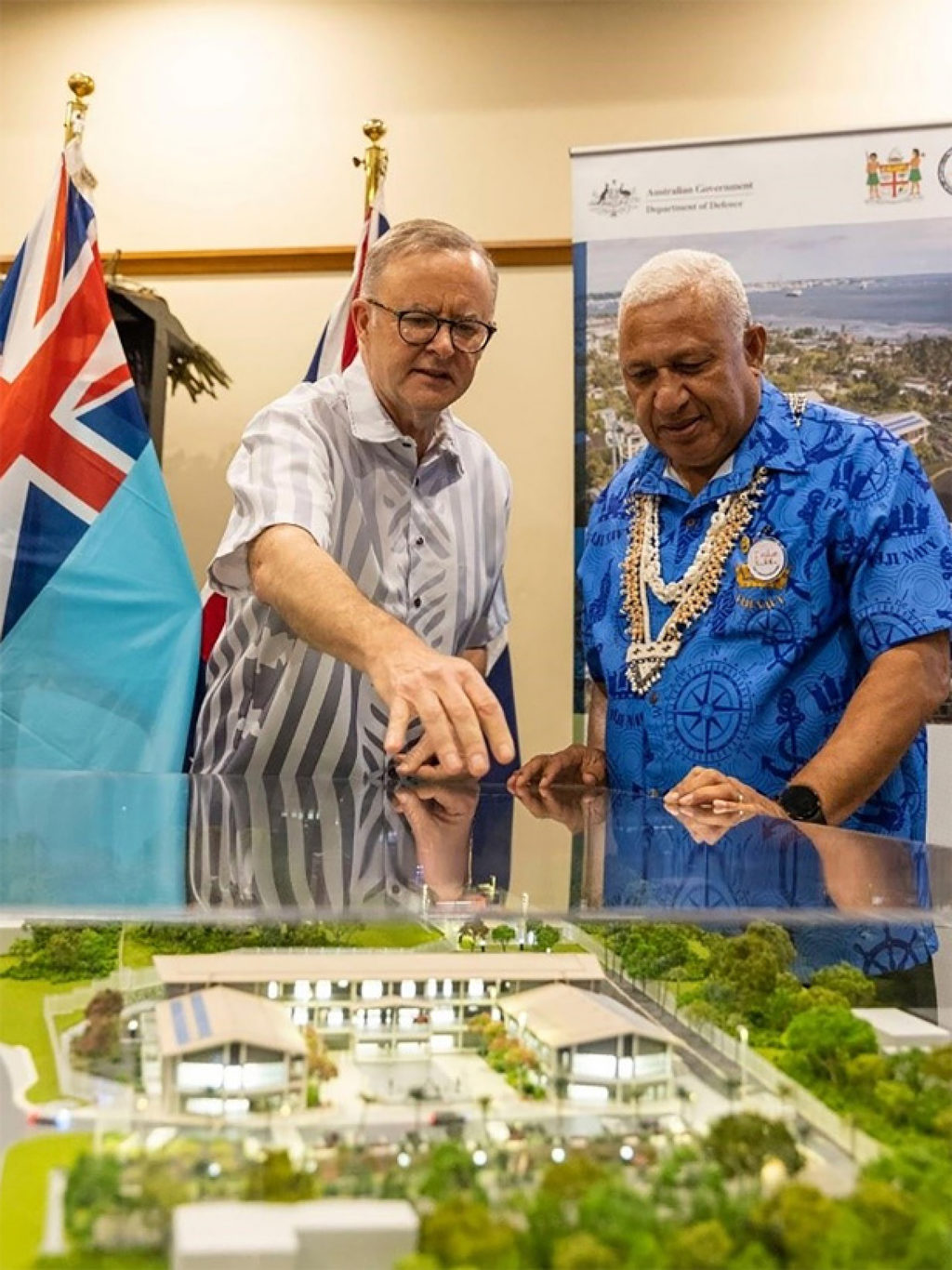
During Prime Minister Anthony Albanese’s visit to Fiji in July 2022, he and Fijian Prime Minister Josaia Voreqe Bainimarama jointly announced the construction of MESC complex situated in Lami. Photo: www.defence.gov.au
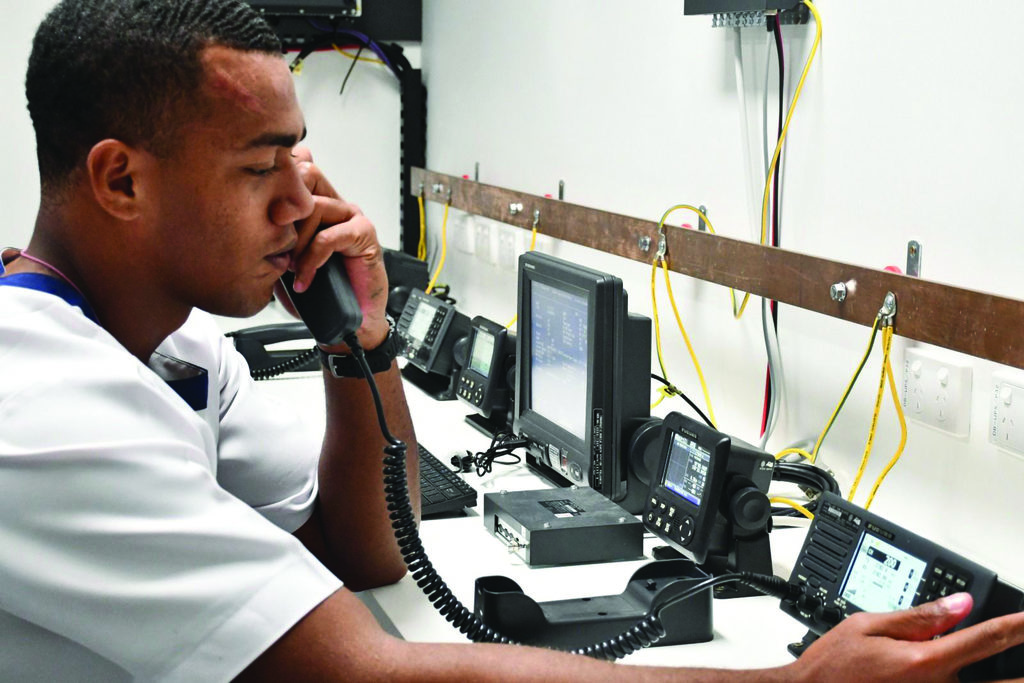
A naval rating at the new Maritime Essential Services Centre (MESC) in Lami, which houses the Fiji Navy Headquarters, Rescue Coordination Centre, Suva Radio Coastal Radio Station, and Fiji Hydrographic Office, monitoring distress calls. Photo: Fiji Navy
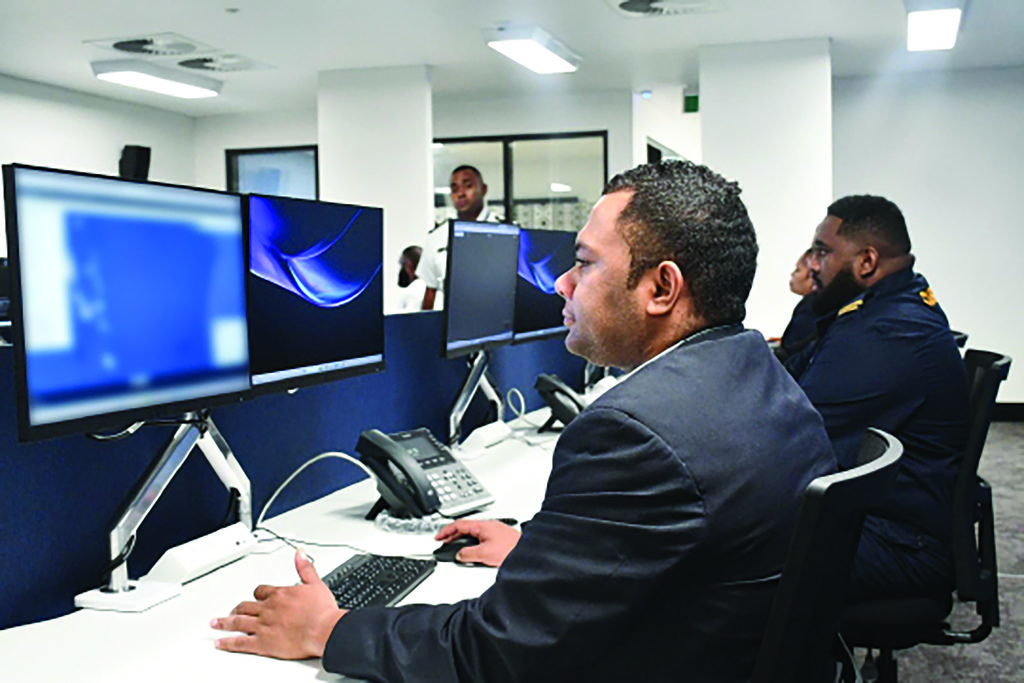
The new MESC facility brings together key government agencies – including the Fiji Police Force, Fiji Revenue and Customs Service (FRCS), and the Fisheries Ministry – under one roof. This centralised collaboration enhances their ability to protect Fiji’s and the Pacific maritime domain against poaching, smuggling, and other transnational threats through unified, coordinated efforts.”. Photo: RFMF Naval Division
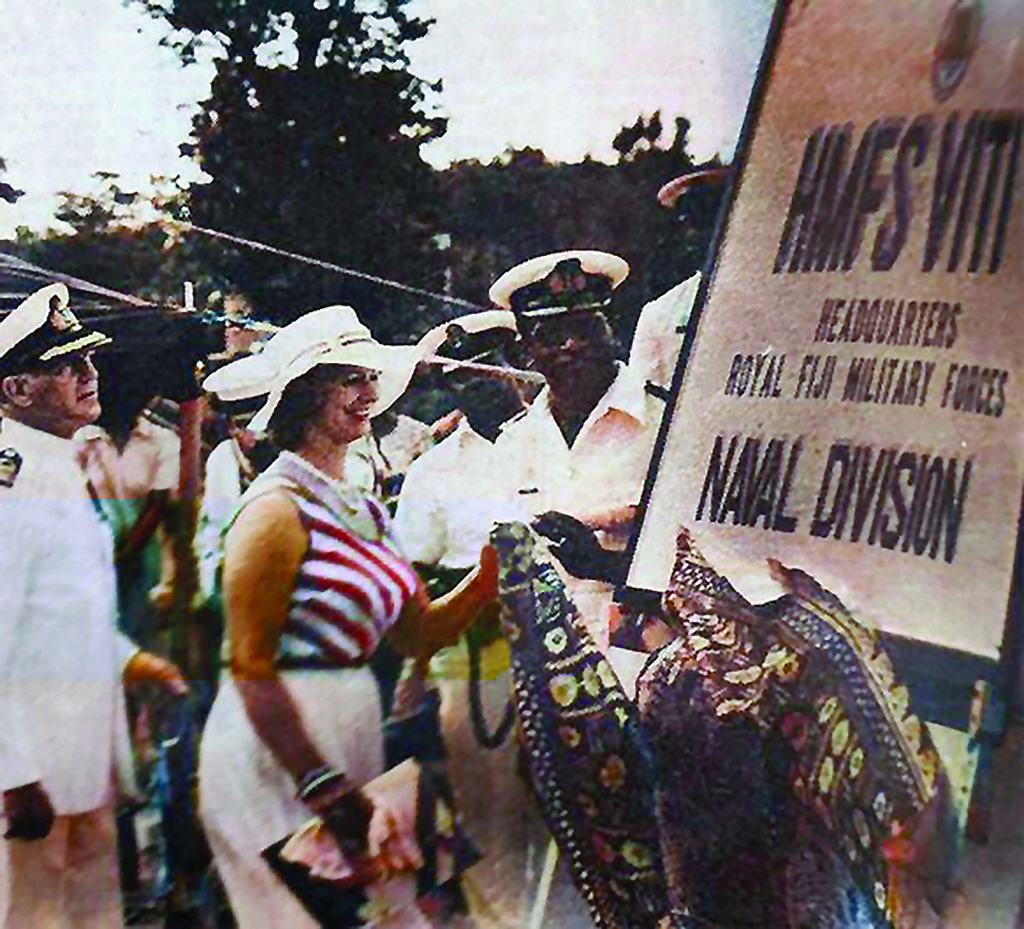
Mrs Steward unveils a plaque to commemorate the opening of the HMFS Viti in Togalevu outside Suva on July 25, 1985. She is the wife of Chief of Navy Staff of the Royal New Zealand Navy, Rear Admiral Cedric John Steward. Picture: Fiji Times/ Fiji National Archives
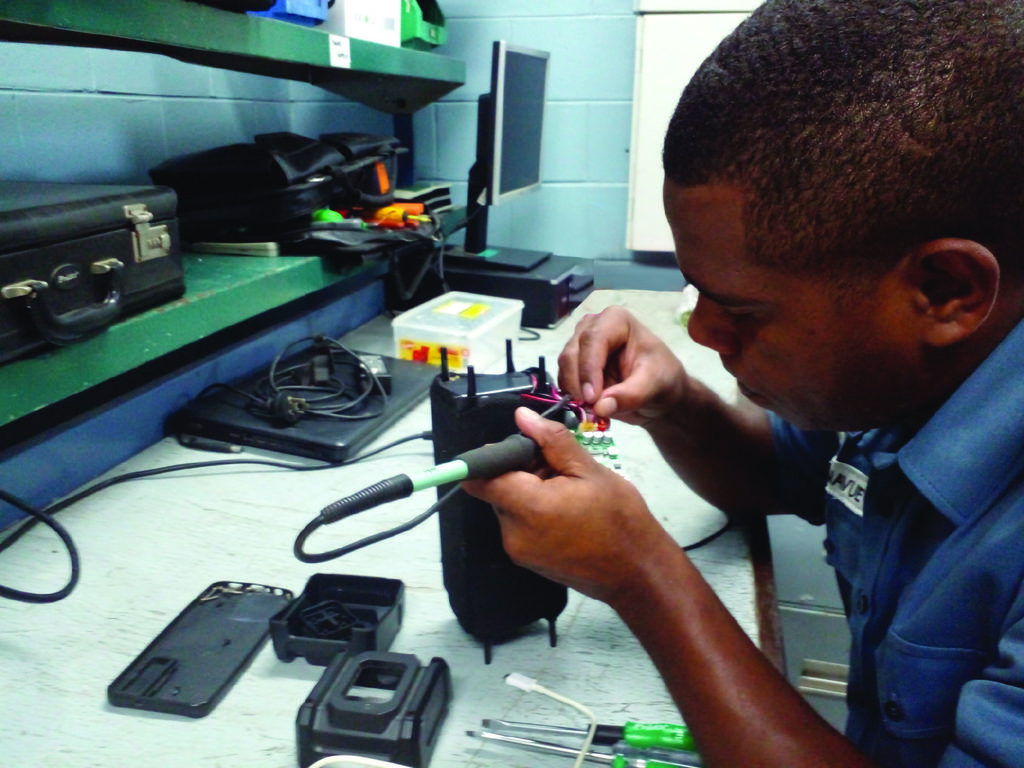
Ordinary Seaman Mosese Ranavue repairs a communication device in the Electronics Workshop at the RFNS Stanley Brown Base. Electronic technicians are part of the Technical Branch of the Fiji Navy, which includes Plant Mechanics and Shipwrights. Picture: HQ RFN
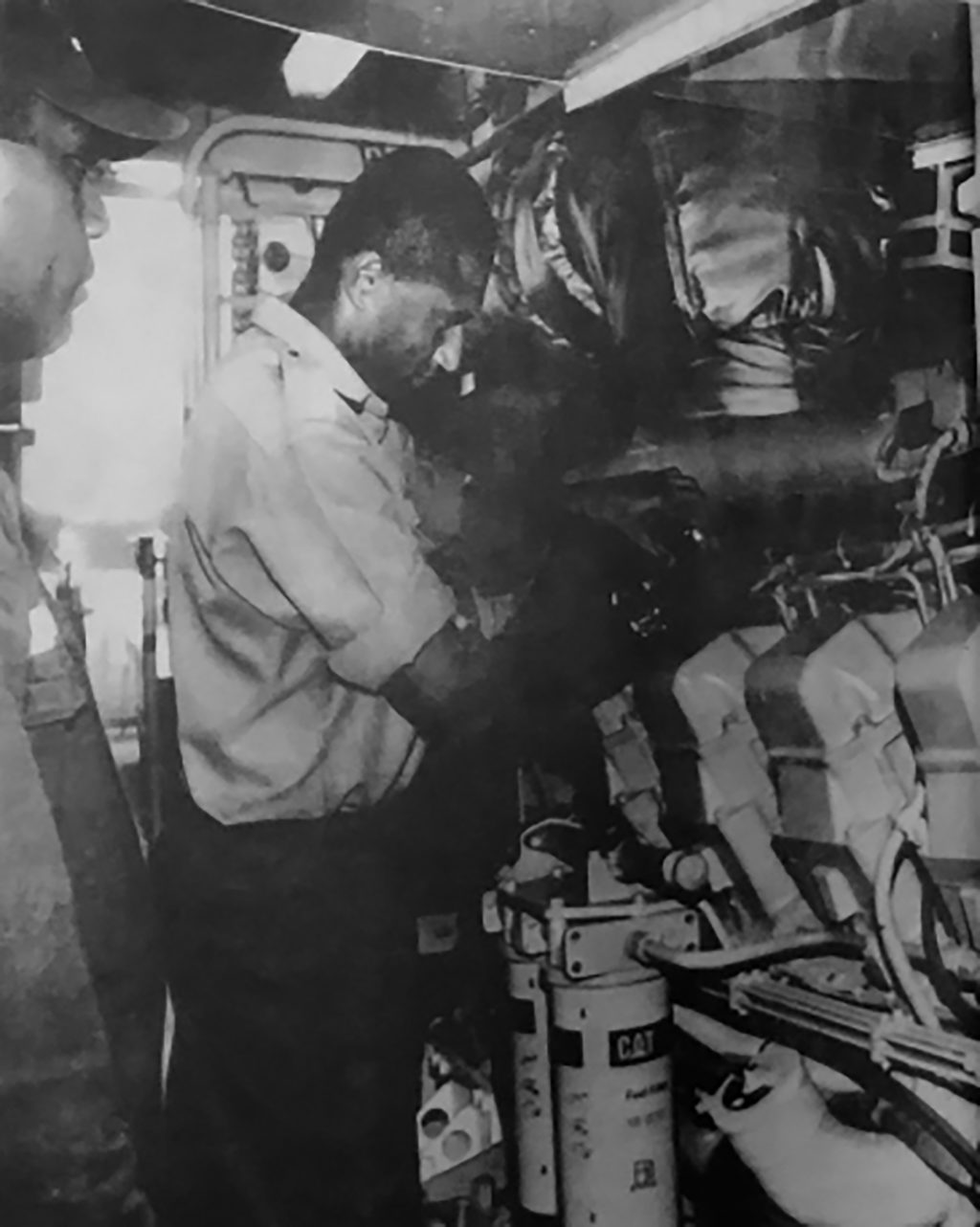
Right: Navy officers conduct maintenance on RFNS Kiro’s engines before she is put to sea in February, 1999. Shore-based Electrical Mechanics and Marine Engineers are essential part of the Republic of Fiji Navy’s Service and fleet support capabilities. Picture: The Fiji Times/ Fiji National Archives
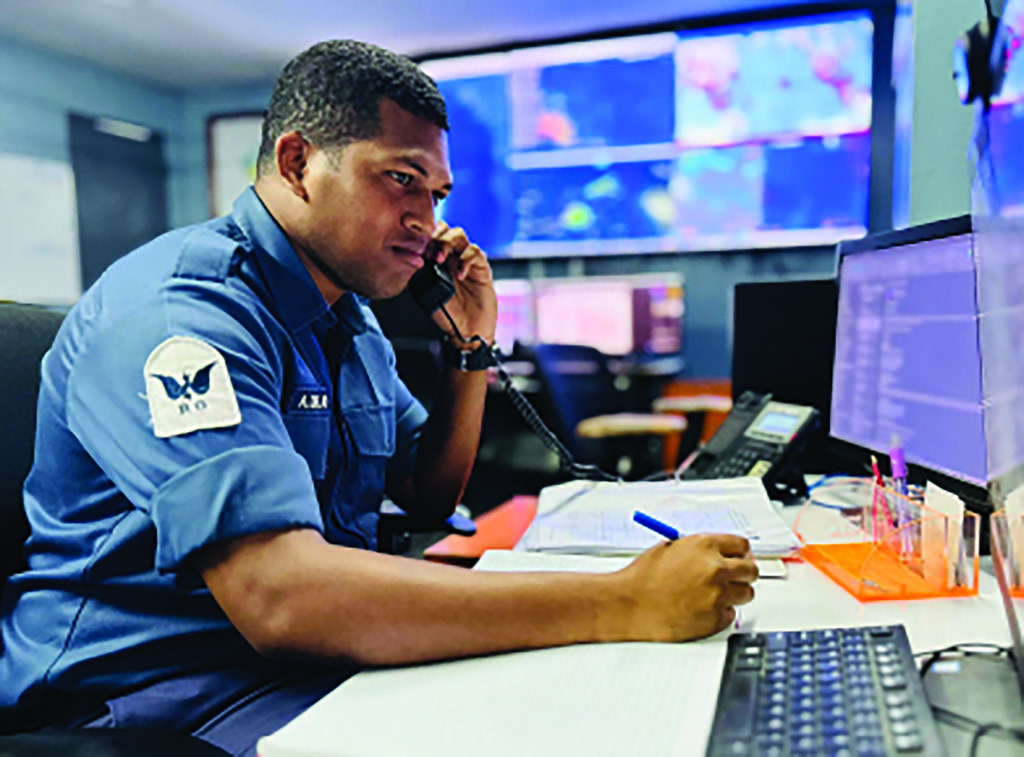
Below: A naval rating manning the Fiji Maritime Surveillance Rescue Coordination Centre at the RFNS Stanley Brown Base at Walu Bay in Suva. Picture: Rescue Coordination Centre Fiji
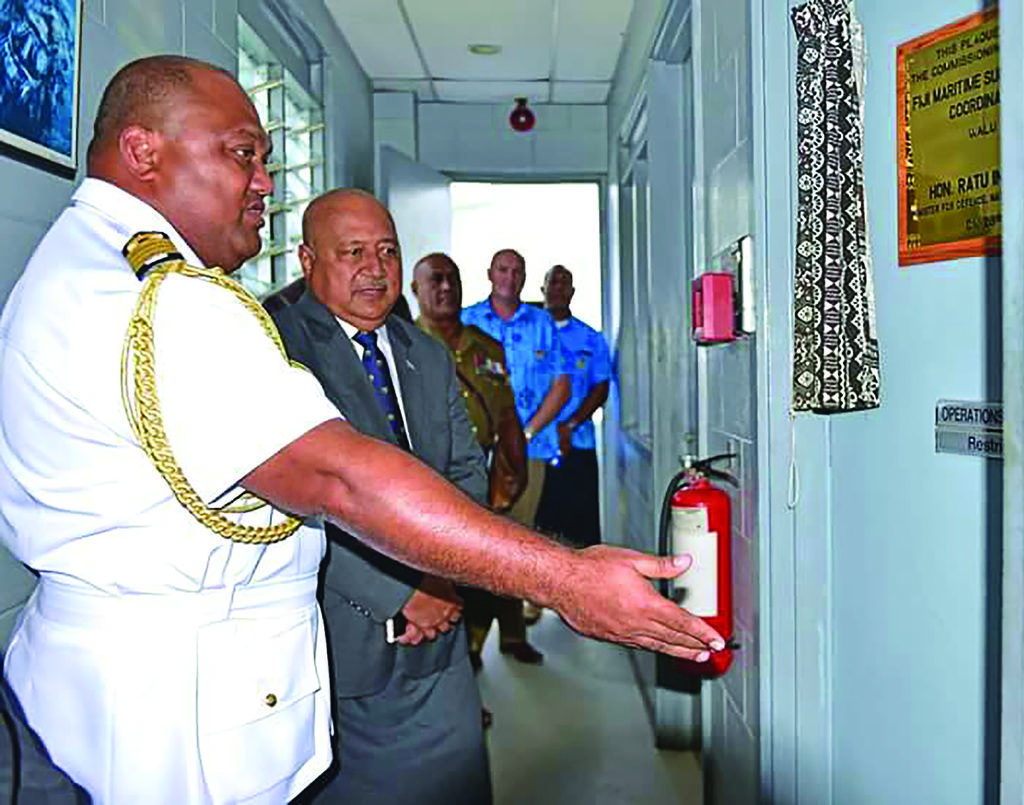
Captain (Navy) Humphrey Tawake escorts the Minister for Defence and National Security, Ratu Inoke Kubuabola inside the the Fiji Maritime Surveillance Rescue Coordination Centre at the administration block of the RFNS Stanley Brown Base in Walu Bay Suva after the minister opened it on July 28, 2017. The purpose of the Fiji Maritime Surveillance and Rescue Coordination Centre is to monitor and coordinate maritime safety, surveillance, and search and rescue operations to ensure the safety of vessels and maritime activities around Fiji. Picture: Government of Fiji/ Facebook
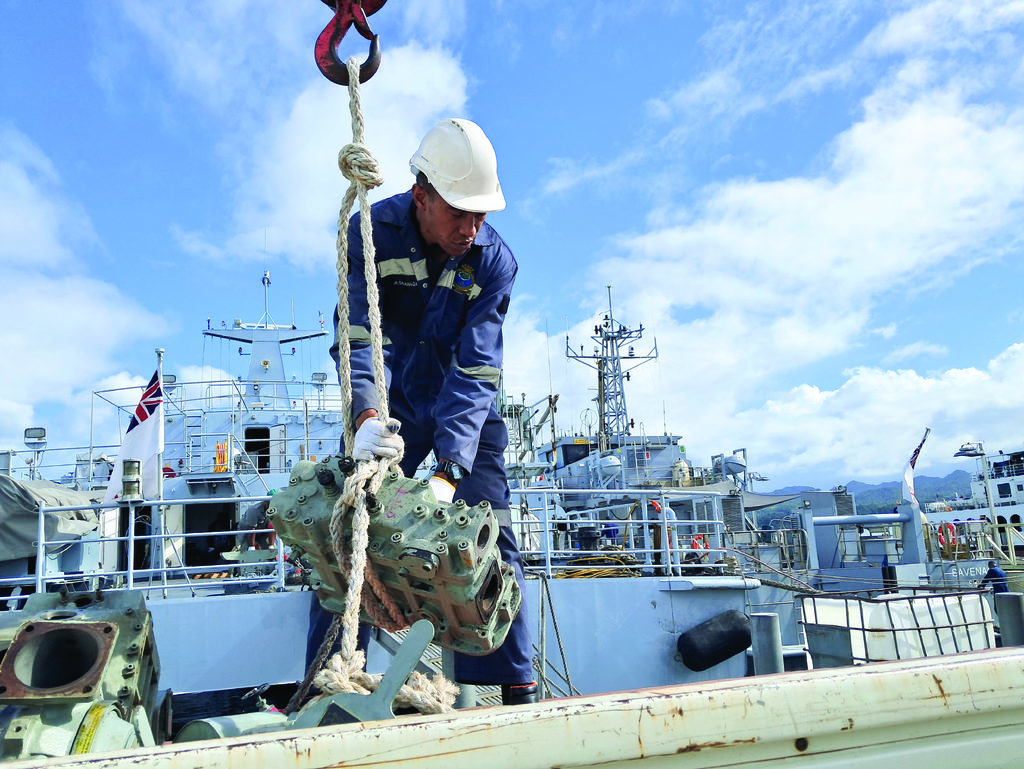
Shore-based support staff, Able Seaman Jekesoni Salawaqa loads engine components for maintenance at the RFNS Stanley Brown Mechanical Workshop. Picture: Supplied
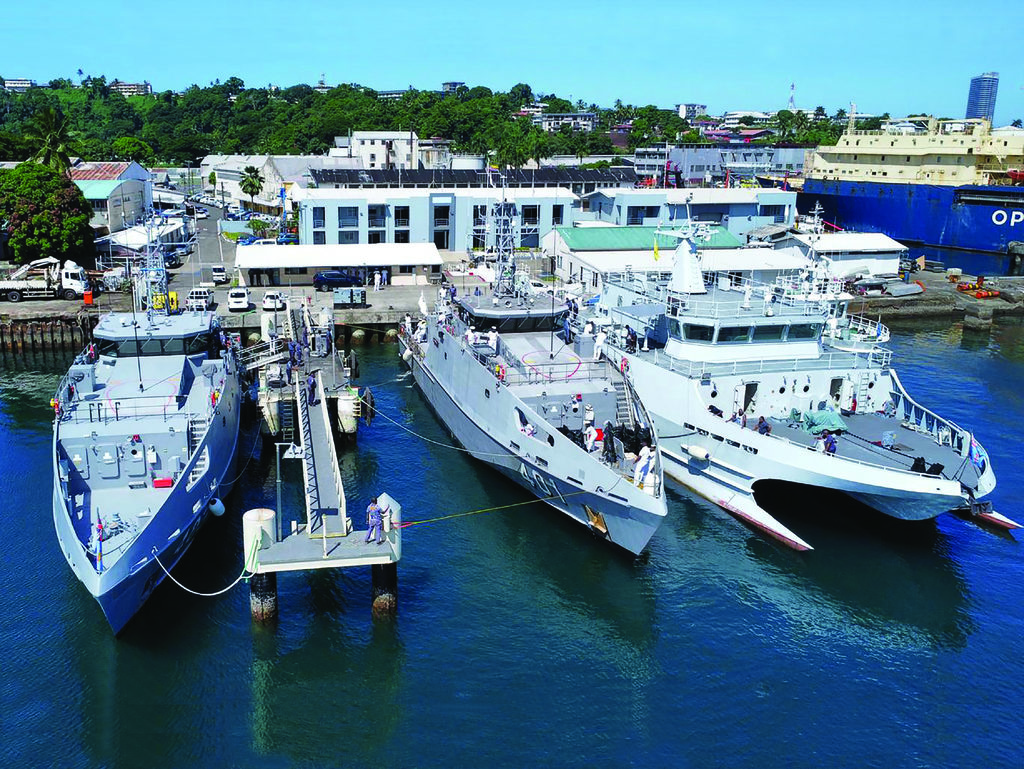
(L-R) Republic of Fiji Navy Guardian-class patrol boats, RFNS Timo and RFNS Savenaca, berthed at the RFNS Stanley Brown pier. To the right is the Chinese-built multi-purpose RFNS Kacau, designed specifically for hydrographic survey. Picture: Fiji Navy
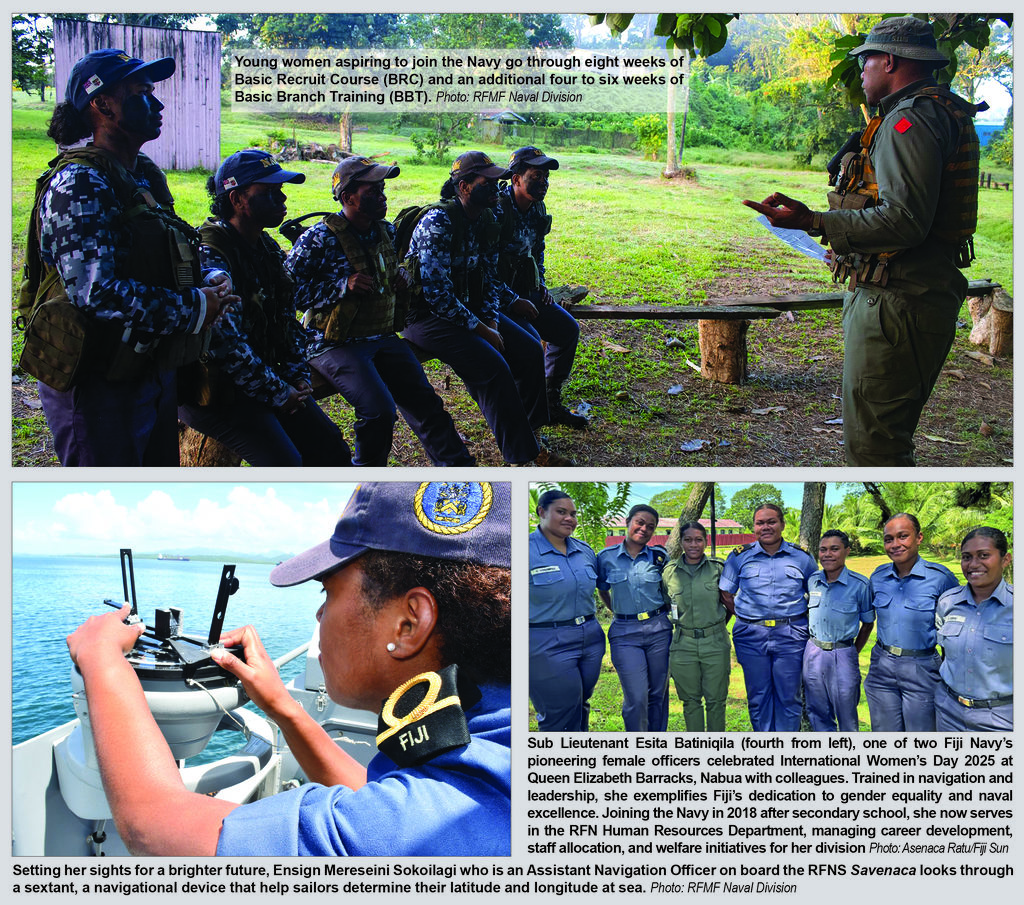
Women in the navy – pictures and captions supplied
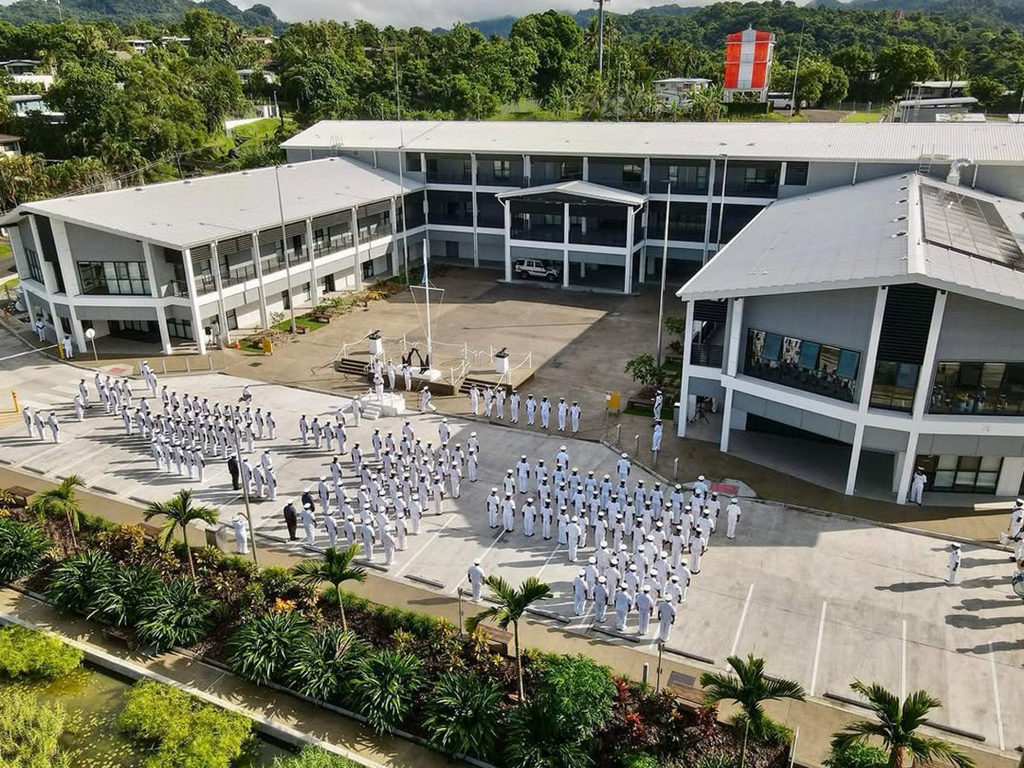
The new Maritime Essential Services Centre constitutes the Fiji Navy Headquarters, the Rescue Coordination Centre, the Suva Coastal Radio Station, the Fiji Hydrographic Office, and the Fusion Centre. It is a versatile, environmentally sustainable facility designed to enhance Fiji’s maritime capabilities, with nearly self-sufficient water and power systems through solar panels and water retention. The project builds on longstanding Fiji-Australia co-operation in maritime security, humanitarian aid, disaster relief, peacekeeping, and training.
Picture: Republic of Fiji Military Forces Naval Division/Facebook

